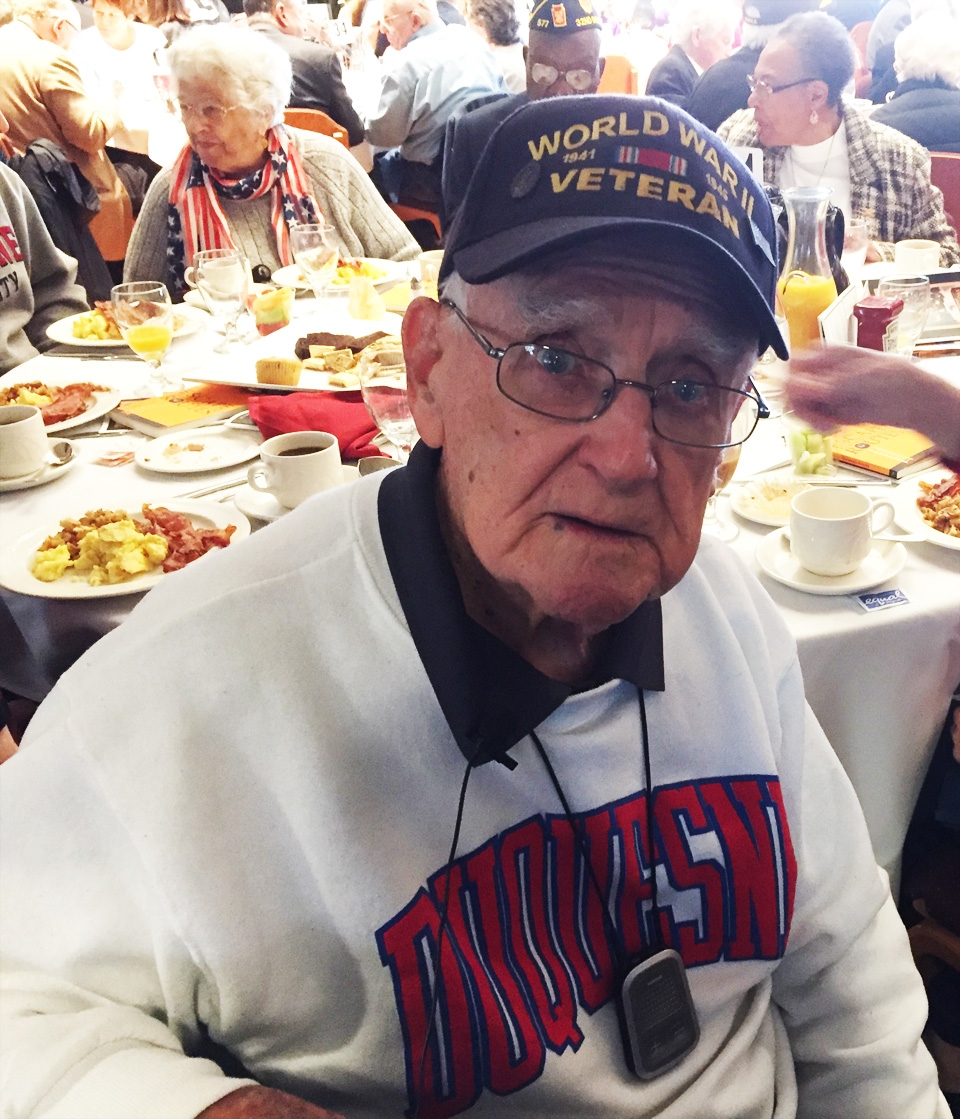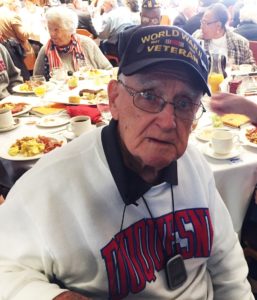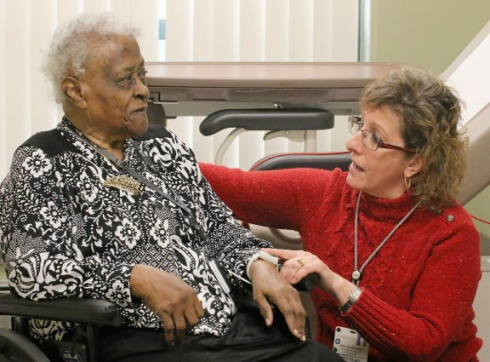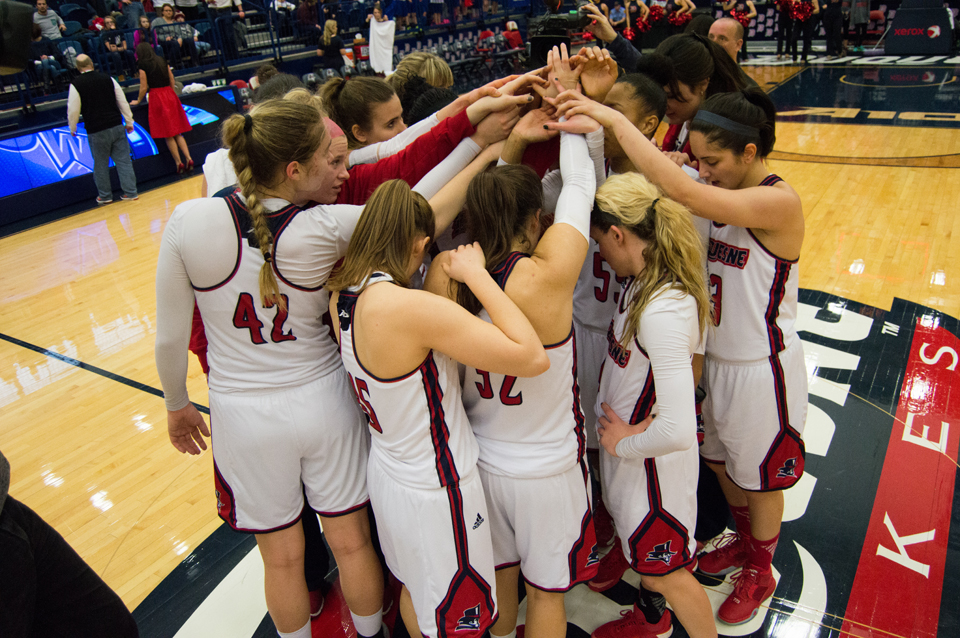
Leo Plunkett, 100, of Penn Hills, visited Duquesne’s Veterans’ Breakfast Nov. 11.

Leo Plunkett, 100, of Penn Hills, visited Duquesne’s Veterans’ Breakfast Nov. 11.
Brandon Addeo | News Editor
In the mid-1930s, Duquesne sports were very different than they are now. The football team competed in — and won — a national bowl game, and the basketball team enjoyed a string of prolific seasons. In the middle of it all, reporting for The Duke, was Leo Plunkett, who served as co-sports editor from 1936 to 1937.
Plunkett, who is 100 years old, visited Duquesne’s Veteran’s Breakfast on Nov. 11. A native Pittsburgher who currently lives in Penn Hills, Plunkett was drafted in World War II and served in the South Pacific theater. He earned the Bronze Star medal for his service.
Plunkett, an English major, started writing for The Duke sports section in as a freshman in 1934 and then became co-editor of the sports section with fellow student Ray Fagan. Back then, The Duke’s office was in St. Martin’s Hall.
Plunkett and Fagan co-wrote a weekly sports opinion column in The Duke called “Thru the Field Glasses.” Plunkett also occasionally wrote a “Sports Oddities” column.
It was a memorable era for Duquesne athletics, Plunkett said.
“The big thing was that [the football team] beat Pitt one time,” he said with a laugh.
The Dukes shut out the Pitt Panthers 7-0 on Oct. 17, 1936, at Pitt Stadium. The game’s sole score was a 71-yard touchdown run by Duquesne’s George Matsik.
Plunkett said the city had come up with a theory about Duquesne’s upset win.
“The Diocese of Pittsburgh had a men’s gathering at Pitt Stadium [before] Duquesne played Pitt. And they said that all those Catholics blessed the stadium, so that’s how Duquesne won,” he said, with a laugh.
Plunkett said his favorite Duquesne football players from his time at the university were Chet Airhart, Boyd Brumbaugh and Mike Basrak, the team’s captain and Duquesne’s first-ever All-American.
That year, the football team, known at the time as the “Bluffites” and the “Hilltoppers” for their location atop the Bluff, capped off the season with its biggest win in history — a 13-12 win in the famed Orange Bowl in Miami, Florida, over Mississippi State. The team ended that season ranked no. 14 in the Associated Press polls, with a record of eight wins and two losses.
In the 1930s, the Duquesne football team did not play games on campus. While they practiced on a field near Old Main, they competed at the now demolished Forbes Field in Oakland, which was then also the home of the Pittsburgh Pirates, according to David Saba, Duquesne’s associate athletic director of media relations.
Rooney Field, Duquesne football’s home field, did not exist until 1993.
Duquesne basketball also made its home in Oakland in the 1930s, at the now demolished Duquesne Gardens arena. Duquesne basketball’s current home, the A.J. Palumbo Center, was not built until 1988.
Plunkett said the Duquesne basketball player he remembers the best is Ed Kweller, who played from 1935 to 1937.
“He was the only guy over six feet [tall] on the basketball team. All the rest were short,” he laughed.
Under coach Charles “Chick” Davies, the team strung together four successful seasons in the mid-1930s — between the 1932-33 and 1935-36 seasons, the Dukes has an overall record of 66 wins against just seven losses.





Great story — so uniquely Duke!
Fantastic – how great to have Mr. Plunkett. Return to Duquesne and share his memories.